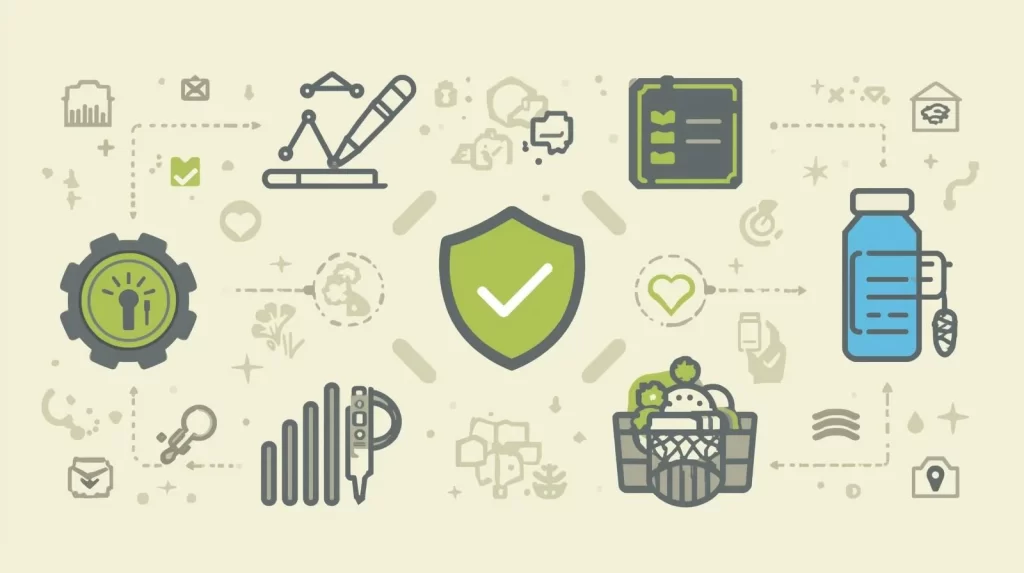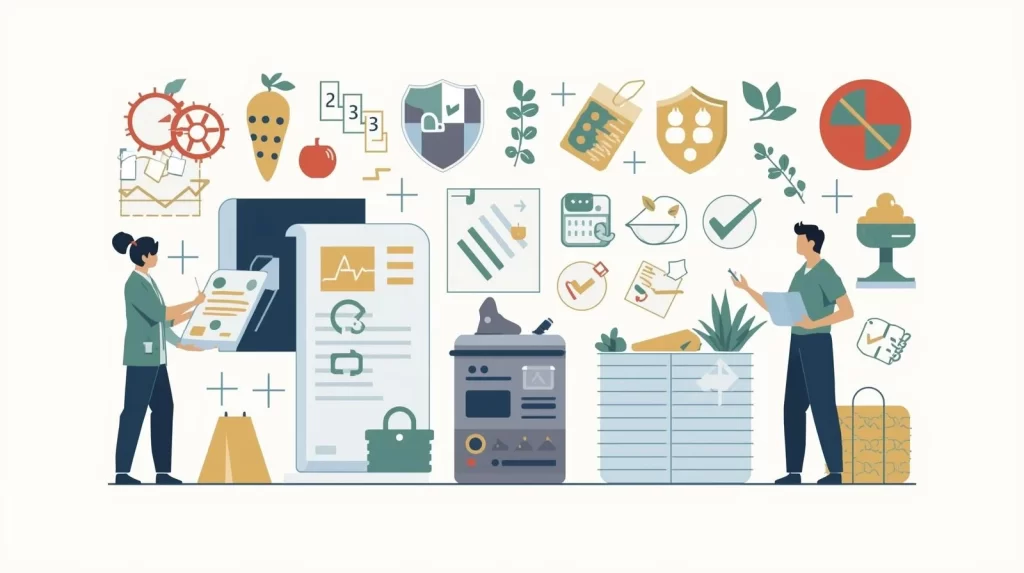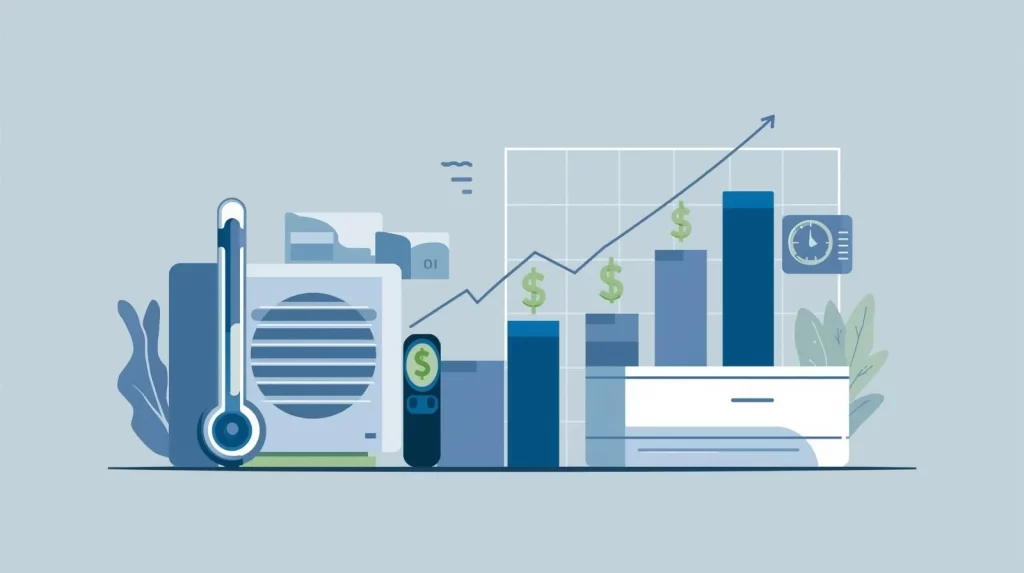A missing page in a binder never feels urgent—until an auditor asks for that exact log and the room suddenly feels smaller.
Most food businesses aren’t failing on intent. In fact, your team shows up every day, follows the HACCP plan, and genuinely cares about doing things right. The challenge is that paper, spreadsheets, and ad-hoc systems just can’t keep pace anymore, especially as you scale to multiple sites, face tighter regulations, and serve customers who expect instant proof at any moment.
From here, digital FSMS solutions start to do the heavy lifting. It becomes the backbone of how you manage risk, prove control, and unlock bigger market opportunities.
Is Paper Still the Biggest Threat to Your Next Audit?
Try walking through almost any plant and you’ll see clipboards hanging near lines, laminated charts on the wall, and binders stacked in QA. On a good day, it feels organized enough. But on a bad day, it feels like a liability.
On those days, paper has a way of getting away from you. For instance, a CCP log gets left on a cart and tossed out with the trash, while a receiving checklist is completed but never makes it back to the file. So when an auditor asks for a specific record and you know it was done but can’t put it on the table fast enough, it no longer feels like bad luck. It’s actually a sign that the system is not really under control.
On top of that, the paperwork itself drifts out of sync. You update a sanitation SOP or metal detection check and QA saves the new version, but somewhere else an old Word file is still being printed and used.
Your food safety management software, if you have it, says one thing while the clipboard on the floor says something slightly different. Over time those small inconsistencies add up, and auditors are very quick to spot them.
Paper slowly works against you at the exact moment you need to move fast. Thus, a simple trace exercise can mean pulling boxes off shelves, flipping through binders and digging through shared drives just to follow one lot.
When a customer asks for proof of a corrective action, you’re suddenly scanning, emailing and double-checking that everyone sent the right pages. But you need to understand that it’s hard to build confidence with regulators, auditors, or buyers when every answer depends on how quickly you can chase down paperwork.
What Exactly Changes When Compliance Goes Digital?
“Going digital” isn’t just about getting rid of paper, but also about changing how your food safety system behaves day to day.
The first big shift is visibility. Instead of waiting until the end of the shift to discover missed checks or borderline temperatures, food safety compliance software shows you what’s happening right now. That said, overdue tasks stand out and non-conformances are visible immediately. Real-time temperature monitoring feeds into dashboards instead of living on a log that nobody sees until tomorrow.
The second shift is traceability. When your records live in one platform, traceability software links raw materials to production, to packaging, to customers. A recall simulation doesn’t require three people and a long afternoon; you can follow a lot backwards and forwards in minutes. That’s a huge difference when retailers or regulators are watching the clock.
The third shift is consistency across sites. Instead of each plant evolving its own forms and habits, you use HACCP software and workflow tools to define a standard way of working, then roll it out everywhere. Local teams still have flexibility, but the structure is shared: same controls, same records, same expectations.
Finally, there’s a change in how audits feel. With food safety audit software and audit readiness software in place, you’re not scrambling to assemble evidence. You’re walking auditors through a system that already aligns with what they expect to see. That doesn’t make audits “fun,” for sure, but it does make them predictable.
How to Guarantee Food Safety and Audit Confidence
You can’t eliminate every hazard in a food operation. But what you can do is build a system that consistently catches issues early, documents what happened, and proves that you’re in control.
At a basic level, most modern digital FSMS platforms share a common set of features:
- Central document and SOP management
- Digital checklists and workflows for monitoring and verification
- Integrated HACCP software for hazard analysis, CCPs, and limits
- CAPA software for non-conformances, investigations, and follow-up
- Embedded traceability software for end-to-end lot tracking
- Food safety audit software and audit readiness software for internal and external audits
- Integrations to capture data like real-time temperature monitoring and other critical parameters
Those generic capabilities are very important. But where a digital FSMS really earns its keep is in the way it solves three stubborn problems.
The Integrity Problem Solved: Audit-Proof Records and Version Control
Auditors start testing data integrity almost from the moment they arrive, even if they don’t say it out loud. In a handwritten, form-based world, that integrity is fragile because so much depends on how things are filled out and stored. Handwriting can be hard to read, corrections are messy or unclear, and old templates have a habit of hanging around in drawers. Put together, those small details make it very easy for doubt to creep in.
Yet a digital FSMS flips that dynamic, because each and every user has a unique login. When someone completes a check, the system records exactly who did it and when. If a record needs correcting, the original stays visible and the change is tracked, rather than erased. The audit trail is built in, not added on.
Version control works the same way too, since there is one master copy of each document and form. So when you revise an SOP or tweak a CCP limit, the new version becomes the one everyone sees. Outdated versions, on the other hand, are archived and not copied. With that, when an auditor asks how you control documents, you don’t just point to a procedure because you can actually show how the system enforces it.
Instead of worrying about whether the page in front of you is the “right” one, you can be confident that what’s on screen is what’s in force.
Real-Time Control: The Proactive Shift from Logging to Prevention
Logging on paper is like looking in the rear-view mirror. You find out what happened, but only after the fact.
Digital FSMS solutions move you closer to live control. Instead of waiting for issues to surface later, checks are done on mobile devices and appear instantly in dashboards. So if a CCP isn’t verified on time, it doesn’t disappear out of the blue; it shows up as an issue that needs a response. In the same way, real-time temperature monitoring and other digital signals trigger alerts while there’s still time to act.
The real power, though, shows up when all of this connects to your CAPA software. A deviation doesn’t just get noted and left there; it turns into a structured event with containment, root cause work, corrective action and effectiveness checks.
Over time, you start to see real trends. Maybe a certain line regularly runs hot on Friday nights, or a specific cleaning step keeps generating the same type of finding. That’s when you can go after the underlying causes instead of fighting the same fires again and again.
The Strategic Audit Advantage: Streamlining GFSI Certification
GFSI-benchmarked schemes are designed to test both the design and the execution of your system. At that point, GFSI compliance software becomes a real anchor for how you prepare.
Instead of treating each audit as a one-off event, your FSMS organizes policies, procedures, records, and internal audit findings around the same structure external auditors use. You can filter records by requirement or clause, show how a specific process is controlled, and move from policy to practice without leaving the platform.
On audit day, that structure really shows. When an auditor asks for a specific sample, for example three months of CCP records for a product or the last few internal audits, you’re not disappearing to hunt through boxes. You simply pull up exactly what they asked for, in order, with timestamps and sign-offs ready to go.
That level of organization doesn’t guarantee a perfect score, but it does send a clear signal: your system isn’t just documented, it’s lived.
The GFSI Gateway: Are Your Records Ready for Global Market Access?
For many manufacturers, a strong GFSI result is more than a quality badge. It’s like the entry ticket to bigger customers, private-label contracts, and export markets.
However, those opportunities come with higher expectations. Large buyers and international partners want more than reassurances; they want proof that your controls, records, and traceability can withstand pressure. They want to know you can respond fast if something goes wrong, and that your data is reliable enough to guide real decisions.
A digital FSMS supports that in a way paper rarely can. When a customer asks how you handle traceability, you can show them how a lot moves through your system. Or when they ask what happens if a cooler drifts out of spec, you can show them alerts, containment actions, and CAPA records. And if they want to understand your audit history, you can pull it up in seconds.
Paperless food safety does more than streamline your internal processes. It also gives customers and partners solid reasons to trust you with higher volumes and more complex products.
In a competitive market, that trust has a very real way of showing up as new business and stronger revenue.
Checklist for Selecting the Right FSMS Partner
Once you’ve decided to move away from paper, the question becomes: who do you trust to run something this important with you?
- Start with experience in regulated environments. A strong FSMS partner understands audits, regulators, and certification schemes as well as they understand code. When you talk about your current HACCP plan or recent non-conformances, they should immediately see how that maps into the system, not just nod politely.
- Then think about how the platform will actually feel on the floor. Operators don’t have time for clunky interfaces and endless clicks. Supervisors need clear views of what’s on track and what isn’t. Quality teams need to build forms and workflows without calling IT every time. The right food safety compliance software makes daily work simpler, not heavier.
- Integration is another big piece. Your FSMS shouldn’t become an island. Look for a system that can connect to sensors, lab data, ERP, and maintenance tools, so you’re not constantly re-entering information. That’s where the real benefits of traceability software and live monitoring show up.
- Finally, look beyond the go-live date. Ask how they handle training, support, and updates. Food safety expectations evolve, and your FSMS needs to evolve with them. Always remember that you’re choosing a partner who will help keep your food safety system sharp and credible over the long term.
FAQs
1. Is digital food safety documentation legally accepted by the FDA and USDA?
Yes, electronic records are accepted as long as they meet specific requirements for security, traceability, and integrity. A validated digital FSMS with proper access control and audit trails can be treated as equivalent to paper in inspections and audits.
2. What is the biggest advantage of a Digital FSMS over paper for audits?
The biggest advantage is how quickly and confidently you can produce complete, accurate records. Instead of hunting through binders, you can search, filter, and show auditors exactly what they ask for in a few clicks.
3. How does a digital system prevent food safety hazards proactively?
By turning monitoring into live information and linking it to clear workflows. Problems trigger alerts and CAPA processes in real time, so you can act early and fix root causes instead of just recording incidents after the fact.
4. What are the common costs associated with switching from paper to digital FSMS?
You’ll typically see software subscription fees, implementation and training costs, and some investment in devices and connectivity. In return, you reduce time spent on paperwork, cut audit pain, and lower the risk and cost of non-compliance and recalls.
5. Is a Digital FSMS the same as an HACCP Plan?
No. Your HACCP plan defines hazards, CCPs, and controls, while a digital FSMS is the system that runs and records them. Think of the plan as the blueprint and the FSMS as the engine that makes that blueprint work every day.






